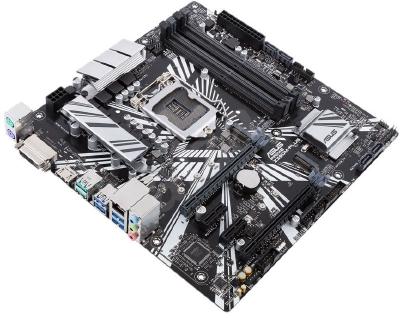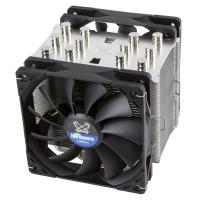My new Mac is not even a Mac: Building a Hackintosh
Table of Contents
For quite a long time, my personal computer was a 17" Macbook Pro. I was satisfied with it. Especially considering that it’s a 9 years old model, the performance was still good enough for general stuff and for making music. (It had 16 Gb RAM, SSD, so it was properly maxed out.) But, even this good ol’ laptop was not perfect: probably because of the subpar cooling system, the GPU tends to leave the motherboard. The only way to fix is a fairly complex process called BGA reflowing, and this laptop was already survived one such attempt - trying another round might or might not work for long.
After this intro, I think you will understand it well enough how I felt when on a nice May afternoon, the GPU just gave up while we were playing with friends online. Suddenly, my daily driver machine got unusable, not even being able to boot. What could I do? Continue reading to see how I managed to solve this 😉
If you know Macs (or any Apple stuff, really), you know it very well that they can be stupidly expensive. “For sure I wouldn’t buy a new one for myself”, I kept saying, but I kind of accepted things as they are, because usually whenever I got an Apple hardware, the quality was kind of right. Also, I learned it the hard way that for making music or for developing software, using macOS is usually the least painful way to go. But now that I had to pay for all those, price to value suddenly became a large problem. I didn’t know what to do. Buy a used Macbook? For those I could get, they would not work with my external Firewire soundcard, neither with the SSD I had lying around. Desktop Macs? My chances were even worse there, especially considering that an iMac doesn’t make sense for me at all…
After calculating things for hours, I figured that my only option to solve this around 250000 HUF (~ 820 USD by the time of writing) is to build a Hackintosh. I always wondered about this one, because it seemed to be a bit too magical, so I started to look around how stable they can be. It was a huge help that I found Dortania, which provided the best tips for the entire process, along with some super useful buyers guides.
Hardware configuration #
I’ve settled with the following config:
Asus Prime Z390M-Plus. Not too big or expensive Z390 motherboard. This is primarily interesting, because nowadays, Z390 is one of the best choices for building a Hackintosh. When I started, Dortania recommended Z370 against the Z390, but there was almost no good option on the Hungarian market for Z370. Given this (and many Reddit threads about people loving Z390 Hackintosh builds), I decided to go with Z390. In the meantime, Dortania has changed their recommendations to include Z390 as well, mostly the ASUS / Gigabyte ones, so now I’m fairly confident that this was a good choice.

Nice little ASUS mobo Intel Core i5-9400F. Even though AMD Hackintosh builds are getting better and easier, a few things still require hacks (Adobe stuff, some music software…) and that was something I wanted to avoid - I wanted to stay as close to vanilla as long as it made sense. So, Intel ended winning this. It was hard to find the most wallet-friendly option, so I chose 9400F: no built-in graphics and no HyperThreading in this one, but at least it’s a 9th gen, and the six cores provide more than enough processing power anyway - it beats my work Macbook easily.
16 Gb RAM. By the way, the mobo + CPU can handle 128 Gb(!).
Saffire Pulse RX 570 8 Gb. This was the biggest learning for me in price/value. I found a whole lot of reviews comparing 570 and 580, and most favors the 580. But usually those guides compare the 4 Gb RAM version of 570 with the 8 Gb 580! In reviews, where the 8 Gb 570 is included, the difference between that and the 580 is not significant at all (e.g. one digit difference in FPS in benchmarks). Considering that this costs around 12000 HUF (~ 40 USD), choosing the 580 did not make much sense for me.
Extras: 500 Gb Samsung 860 EVO (SATA) in addition to the one I already had. A 600 W Thermaltake PSU (the config could probably get away with a 500 W one, but I would rather not take any risk in this). A nice little Cooler Master case. For cooling, I originally used the stock Intel one, but that soon found itself unemployed once it convinced me with its terrible noise levels to invest some extra money. In the end, I went with a Scythe Mugen 5 PCGH Edition (thanks Kova for the recommendation!) This stuff basically fixed my relationship with this computer, as it is super silent 😂

Super decent - and silent! - cooling from Scythe
Software setup #
I don’t really want to go too deep into technical details here - it’s all hardware dependent anyway. But most importantly, with OpenCore and Dortania’s OpenCore install guide, I could manage to get a pretty much vanilla setup, where I don’t feel the difference between this and a “real Mac” at all. It runs macOS Mojave (thanks, but no thanks, Catalina). It’s pretty cute, as it think about itself as a 5K 2019 iMac 27". All of my stuff runs perfectly, including my not-supported-in-ages, Firewire-using Focusrite Saffire as well. Just for fun, it got a dual boot Win 10 for games, where everything runs perfectly.
Some tips that you might find useful if you ever get started with such an adventure:
- Always have a backup of a working EFI settings. Would be pretty sad to lose your working config during finetuning, making things unbootable…
- If you want dual boot, it’s recommended to have the second system on a separate drive. This was one of the reasons I bought an extra SSD. By the way, with the OpenCore bootloader, you can start the installed Windows, so things just work. (It’s quite fun, though, because Windows gets to see some of the hacks, so e.g. the mainboard vendor is marked as acidanthera instead of ASUS in my case - acidanthera is the person who maintains OpenCore. Anyway, this doesn’t seem to affect the performance at all, so I didn’t care much about this.)
All in all… #
…I’ve managed to put together a perfectly working “Mac” for around 280000 HUF (~ 920 USD). For this, I got a system which does everything I wanted perfectly. Still, I would not recommend this process to anyone, but if you’re patient enough to keep reading and tweaking, I don’t think it will be a problem for you. Selecting the components took the majority of the time for me (around 2-3x the time of actually building and installing it). But if you managed to get the right components, it’s all (somewhat) easy from there.